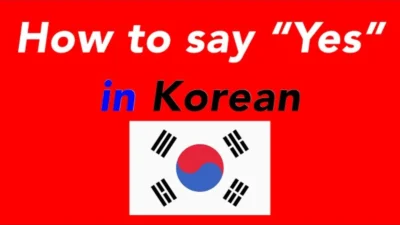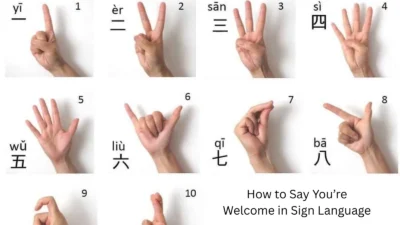How to Say Nice to Meet You in Spanish is one of the most important phrases to learn when making new friends or meeting someone for the first time. If you’re traveling, working, or studying in a Spanish-speaking country, knowing how to greet someone politely leaves a great first impression. From formal to informal situations, learning this phrase helps you sound friendly, respectful, and confident.
In this guide, you’ll discover different ways to say nice to meet you in Spanish and when to use them correctly.
Mastering how to say nice to meet you in Spanish also shows cultural awareness and effort in connecting with native speakers. It’s a simple phrase that can open doors to meaningful conversations.
Say Nice to Meet You in Spanish
Ready to master these greetings and leave a great first impression?Using the right expression shows not only good manners but also a genuine interest in connecting with others.
15 phrases table for How to Say Nice to Meet You in Spanish
| No. | Spanish Phrase | English Meaning |
|---|---|---|
| 1 | Mucho gusto | Nice to meet you |
| 2 | Encantado | Nice to meet you (said by men) |
| 3 | Encantada | Nice to meet you (said by women) |
| 4 | El gusto es mío | The pleasure is mine |
| 5 | Fue un placer conocerte | It was a pleasure meeting you |
| 6 | Gusto en conocerte | Nice meeting you |
| 7 | Es un placer conocerte | It’s a pleasure to meet you |
| 8 | Me alegra conocerte | I’m glad to meet you |
| 9 | Encantado de conocerte | Delighted to meet you |
| 10 | Es un placer verte | It’s a pleasure to see you |
| 11 | Me da gusto conocerte | I’m pleased to meet you |
| 12 | Qué gusto conocerte | What a pleasure to meet you |
| 13 | Fue un gusto conocerte | It was nice to meet you |
| 14 | Un placer conocerte | A pleasure to meet you |
| 15 | Encantado de verte | Nice to see you |
1. Mucho gusto – Nice to meet you
Origin:
Literally means “Much pleasure.” It’s the most common and universal way to say “Nice to meet you” in all Spanish-speaking countries.
Example:
👤 User A: Hola, soy Ana.
👤 User B: Mucho gusto, Ana. Soy Luis.
Use: Neutral and widely accepted in all contexts.
2. Encantado / Encantada – Delighted
Origin:
Comes from the verb encantar, meaning “to delight.” “Encantado” is used by males, and “Encantada” by females.
Example:
👤 User A: Me llamo Javier.
👤 User B: Encantada. Soy Clara.
Use: Slightly more formal or elegant.
3. Es un placer conocerte – It’s a pleasure to meet you

Origin:
Literally “It’s a pleasure to meet you.” Used more formally or in written introductions.
Example:
👤 User A: Buenas tardes, soy el Sr. Gómez.
👤 User B: Es un placer conocerte, Sr. Gómez.
Use: Polite and formal; good for business or professional settings.
4. Un placer – A pleasure
Origin:
Shortened version of “Es un placer.” Common in both Spain and Latin America.
Example:
👤 User A: Gracias por venir.
👤 User B: Un placer. Gracias por invitarme.
Use: Friendly but slightly formal.
5. Igualmente – Likewise
Origin:
Means “equally” or “likewise.” Often used as a response to “Mucho gusto.”
Example:
👤 User A: Mucho gusto.
👤 User B: Igualmente.
Use: Polite, short, and reciprocal.
6. El gusto es mío – The pleasure is mine
Origin:
A classy and respectful reply to someone saying “Mucho gusto.”
Example:
👤 User A: Mucho gusto.
👤 User B: El gusto es mío.
Use: Formal or polite response.
7. Me alegra conocerte – I’m glad to meet you

Origin:
Comes from the verb alegrar (to make happy). Used in warm and friendly encounters.
Example:
👤 User A: Hola, soy Sofía.
👤 User B: Me alegra conocerte, Sofía.
Use: Friendly and heartfelt.
8. Qué gusto conocerte – What a pleasure to meet you
Origin:
A more expressive version of “Mucho gusto.” Adds excitement or friendliness.
Example:
👤 User A: Soy Marco.
👤 User B: ¡Qué gusto conocerte, Marco!
Use: Warm and enthusiastic.
9. Un placer conocerte – A pleasure to meet you
Origin:
Combines “Un placer” and “conocerte” for a complete yet concise greeting.
Example:
👤 User A: Soy tu nuevo compañero de trabajo.
👤 User B: Un placer conocerte.
Use: Friendly and semi-formal.
10. Es un honor conocerte – It’s an honor to meet you

Origin:
Used in highly formal or respectful contexts, especially when meeting someone important.
Example:
👤 User A: Bienvenido, Sr. Presidente.
👤 User B: Es un honor conocerte.
Use: Very formal or ceremonial.
11. Gusto en conocerte – Pleasure in meeting you
Origin:
Used more often in Latin America, especially Mexico.
Example:
👤 User A: Soy María, la amiga de tu hermana.
👤 User B: Gusto en conocerte.
Use: Polite and neutral.
12. Me da gusto conocerte – I’m pleased to meet you
Origin:
An emotional and personal way to say “Nice to meet you.”
Example:
👤 User A: Hola, soy el primo de Carlos.
👤 User B: Me da gusto conocerte. ¡He oído mucho de ti!
Use: Warm and familiar.
13. Fue un placer conocerte – It was a pleasure meeting you
Origin:
Used when the conversation or meeting is ending.
Example:
👤 User A: Me tengo que ir.
👤 User B: Claro. Fue un placer conocerte.
Use: Parting phrase after meeting someone.
14. Me encantó conocerte – I loved meeting you
Origin:
A heartfelt expression; literally means “I loved meeting you.”
Example:
👤 User A: Gracias por la cena.
👤 User B: Me encantó conocerte. ¡Hasta pronto!
Use: Warm and personal, often after a good experience.
15. Encantado de conocerte – Delighted to meet you
Origin:
A fuller version of “Encantado.” Common in Spain and formal settings.
Example:
👤 User A: Soy el nuevo gerente.
👤 User B: Encantado de conocerte.
Use: Polite and formal.
FAQs
- What is the common way to say “Nice to meet you” in Spanish?
The most common phrase is “Mucho gusto.” - How do you pronounce “Mucho gusto”?
It’s pronounced MOO-choh GOOS-toh. - What does “Mucho gusto” mean exactly?
It means Nice to meet you or literally Much pleasure. - Is there another way to say it?
Yes, you can also say “Encantado” (for men) or “Encantada” (for women). - When should I use “Encantado” or “Encantada”?
Use it after introductions, just like “Pleased to meet you.” - How do you respond to “Mucho gusto”?
You can say “El gusto es mío” — it means The pleasure is mine. - Is “Mucho gusto” formal or informal?
It’s polite and works in both formal and informal situations. - How do you say “Nice meeting you” in Spanish?
Say “Fue un placer conocerte.” — it means It was a pleasure meeting you. - What’s a formal way to say “Nice to meet you”?
“Es un placer conocerle.” is a very polite version. - Can I just say “Gusto en conocerte”?
Yes, it’s another natural and friendly way to say Nice to meet you.
Conclusion:
Now that you know how to say nice to meet you in Spanish, you’re ready to make warm and respectful introductions in any Spanish-speaking environment. Whether you use “Mucho gusto”, “Encantado”, or another phrase, your effort to speak the language will be appreciated.
Keep practicing these greetings to feel more confident and natural in conversations.
So next time you meet someone new, confidently say nice to meet you in Spanish and make a great first impression.



